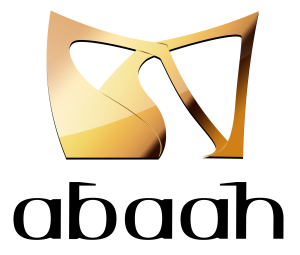In 1726, Boskovich was admitted to the Roman Collegium. Established in the middle of the XVI century, it was not only the main Jesuit school, but also the best in terms of teaching physics and mathematics. The College had a large library, here was the world's first museum of natural history, named after its founder Athanasius Kircher "Museumkircherianum". His teachers, physicist Carlo Nocetti and mathematician Orazio Borgondio, had a beneficial influence on the future scientist at the Roman College. The latter published several treatises on astronomy, sustained in the spirit of Newtonianism, which was quite bold for the first third of the XVIII century. After completing the course of sciences and becoming a full member of the Jesuit Order, Boskovich in 1732 received the right to teach in the lower grades. At first he worked in the small town of Fermo, then returned to Rome, and from 1740 he headed the Department of Mathematics at the Roman Collegium.
Written in the form of a poem, Boskovich's first work "On Solar and Lunar Eclipses" testifies not only to his ability to observe and comprehend natural phenomena, but also to a remarkable poetic gift. In 1735, during the inauguration ceremony of the faculty of the Roman College, he recited the hexameters of his poem, which then contained no more than 300 verses. Later, he included in it discussions about the eclipses of June—July 1748 and other materials. In its completed form, the poem was published in London in 1760 with a dedication to the Royal Society (he was elected a member in January of the following year). It is interesting that the author of the poem talks about the peculiar reddish color that slightly stains the Moon during eclipses, and provides evidence of the absence of an atmosphere on the Earth's satellite. In brilliant Latin, Boskovich lavished praise on Newton in the poem. The Leipzig scientific journal Nova Acta Eruditorum wrote about the poem: "If the book as a whole were not so perfect and accurate in mathematics and physics, it could be mistaken for an essay from the time of Augustus."
Even before his appointment to the Department of Mathematics at the Roman Collegium, Boskovich attracted the attention of the scientific world with several original publications. In 1737, a pamphlet was published on the passage of Mercury through the disk of the Sun on November 11, 1736 — an account of Boskovich's first astronomical observations. Joseph Nicolas Delille found out about it. Shortly before returning to France from Russia, where he worked at the Academy of Sciences for 20 years, Delille wrote from St. Petersburg to the director of the Vienna Observatory, J. J. Marinoni: "I still lack the details of the observation of the passage of Mercury in 1736, performed in Rome by the Jesuits, which is mentioned in the dissertation (Boskovich. — G. Ts.). Since scientific journals claim that this work contains, in addition to the description of observation, a method of calculation and other interesting notes, you would be very pleased to send me one copy." Back in Paris, Delille makes this request to Boshkovich himself, but does not receive a copy of the work, however, for a reason beyond Boshkovich's control.
In 1736-1740, at least eight more scientific works by Boskovich were published. In his dissertation "On Sunspots" (1736), he proposed "two methods for determining the initial data of its rotation around the axis by three positions of one of the spots, using graphical construction in the first method, and rectilinear trigonometry in the second." A year later, his treatise "The Construction of spherical trigonometry" is published, where simple graphical solutions of the six basic equations of spherical trigonometry are given and four of them are highlighted, which are used almost unchanged in our time. In an essay published in 1739 in Rome and reprinted in Leipzig a year later — "On the New Telescope" — Boskovich described the ring micrometer he invented. This invention is usually associated with the name of the Frenchman A. Rochon.
On the night of December 16, 1737, a bright aurora was visible throughout Italy, and in 1738 Boskovich's pamphlet "On the Northern Lights" was published, where he expressed his guesses about the causes of the mysterious phenomenon. Seven years earlier, a "Physical and Historical Treatise on the Northern Lights" by J. J. Dorthou de Meran was published in Paris. It turned out that Meran's "hypothesis" about the nature of the auroras coincides with the conclusions independently drawn by his colleague from observations in Italy. Meran and Boskovich explained the northern lights as "a double reflection of the sun's rays, one from the snow—covered northern lands, the other from the upper parts of the atmosphere." Meran's treatise was sharply criticized at that time, but found significant support in the dissertation of "Reverend Father Boskovich". Correspondence began between the scientists, and it is not surprising that on May 4, 1748, on the recommendation of Meran, "Father Boskovich, professor of mathematics in Rome," was elected a corresponding member of the Paris Academy of Sciences.
Boskovich also has the merit of developing in 1746 a method for calculating cometary orbits, which formed the basis of all subsequent works in this field. Later, he applied his method to clarify the orbital elements of the planet Uranus, discovered by W. Herschel in 1781. Some astronomers considered it a comet with a parabolic orbit. https://wazamba-casino.app
